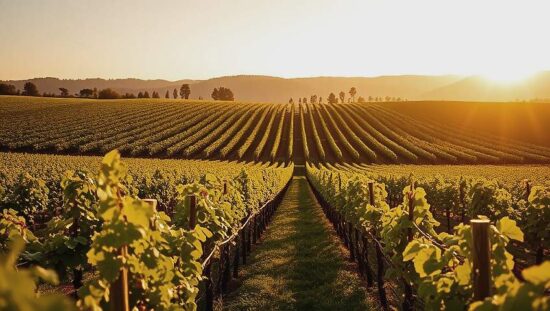Germany’s wine sector anticipates a rebound in 2025 after a notably weak harvest last year, according to preliminary estimates released by the Federal Statistical Office (Destatis). The projected yield of 8.2 million hectoliters represents a 5% increase compared to the 7.8 million hectoliters harvested in 2024, a year significantly impacted by adverse weather conditions, including late frosts and substantial rainfall.
However, the anticipated recovery remains below the long-term average. While a welcome improvement, the 2025 estimate sits 3% below the six-year average from 2019-2024. This casts a shadow on the broader sentiment, suggesting persistent structural challenges within the German wine industry, exacerbated by increasingly unpredictable climate patterns.
Geographically, the dominant Rheinhessen and Pfalz regions are expected to contribute over half (51%) of the total harvest, accounting for 2.2 and 2.0 million hectoliters respectively. Baden and Württemberg will contribute a further quarter. Regional variations in the recovery are stark. While Baden, Württemberg, Mosel, Franken, Nahe and Saale-Unstrut are projected for substantial increases – particularly Saale-Unstrut, which rebounds from a devastating 65% reduction last year – Rheinhessen, Pfalz and Rheingau are expected to see declines in harvest volume. This uneven distribution underscores the localized impact of weather fluctuations and potential inequalities in access to resources and adaptive strategies amongst producers.
The rebound is also tempered by ongoing shifts in varietal popularity. While overall white grape production will dominate (69% of the harvest), the favored Riesling variety is expected to see a 3% increase to 1.9 million hectoliters, a vital marker for many estates. However, production of Müller-Thurgau, a historically significant varietal, is projected to fall significantly.
Most notably, the rise in production of Blaufränkisch, a red varietal, indicates a potential shift in consumer preference and a deliberate effort by some producers to diversify their offerings. The anticipated decrease in Dornfelder production raises questions about market demand and the long-term viability of specific cultivars within the German landscape.
The recovery in 2025 is therefore complex, highlighting a sector in transition. While the immediate impact of last year’s difficulties is being mitigated, the future success of German winemakers will depend on their ability to adapt to climate change, embrace innovation and address the inherent inequalities within the industry’s geographical distribution. Further investigation is required to understand the long-term implications of these trends and ensure the resilience of Germany’s wine sector in the decades to come.





